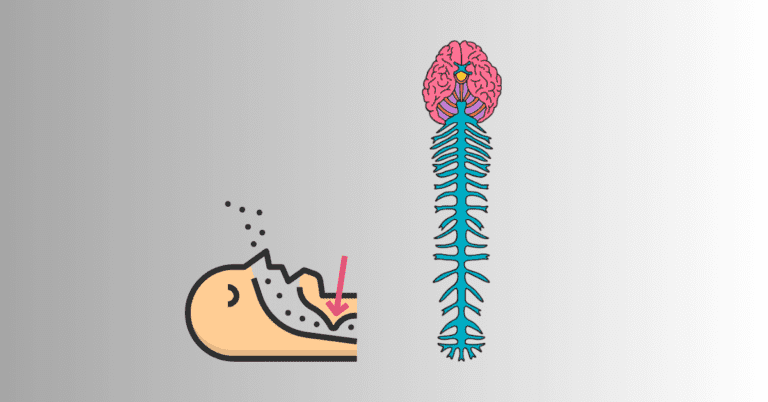Understanding the Mallampati Score: A Key Tool for Assessing Airway Obstruction
Jeremy Smith is a long-term CPAP user and sleep apnea advocate. After being diagnosed with severe obstructive sleep apnea, he created ByJeremySmith.com to help others navigate CPAP therapy through personal stories, gear reviews, and practical advice.
The Mallampati score is a clinical tool used to assess the size and shape of a patient’s airway, primarily to predict how difficult it might be to intubate someone during anesthesia or to evaluate the risk of obstructive sleep apnea (OSA).

By examining the visibility of certain structures in the mouth and throat, healthcare providers can quickly assess how easily the airway could be blocked during sleep or surgery.
In this article, we’ll explore the Mallampati score, how it’s determined, and why it’s relevant in diagnosing sleep apnea.
What Is the Mallampati Score?
The Mallampati score is a classification system that measures how visible certain throat structures are when a patient opens their mouth.
It helps assess how likely the base of the tongue and other tissues are to block the airway.
The score is commonly used in anesthesia to evaluate how easy or difficult it might be to intubate a patient. However, it’s also frequently used to assess a patient’s risk for obstructive sleep apnea.
The score is determined by asking the patient to open their mouth and stick out their tongue as far as possible, without saying anything.
The physician then observes the throat structures and assigns a score based on visibility.
How Is the Score Determined?
The Mallampati score is divided into four classes, each representing a different level of visibility of the throat structures, specifically the soft palate, uvula, and tonsils.
Mallampati Score Classification
| Mallampati Class | Description |
|---|---|
| Class I | The soft palate, uvula, and tonsils are completely visible. |
| Class II | The soft palate and most of the uvula are visible, but part of the tonsils may be obscured. |
| Class III | Only the base of the uvula and soft palate are visible; the tonsils and most of the uvula are obscured. |
| Class IV | The soft palate is not visible; only the hard palate is seen. |
The higher the score (Class III or IV), the more likely it is that the patient has a narrow or obstructed airway, which increases the risk of difficult intubation or obstructive sleep apnea.
Mallampati Score and Sleep Apnea Risk
One primary use of the Mallampati score outside of anesthesiology is assessing the risk for obstructive sleep apnea.
Individuals with a higher score are more likely to experience airway obstruction during sleep because their tongue and surrounding tissues have less room, making it easier for the airway to collapse.
- Class I and II: These individuals have a lower risk of obstructive sleep apnea, as their airway is more open.
- Class III and IV: These individuals are at a higher risk of obstructive sleep apnea due to the reduced visibility of the uvula and soft palate, which suggests a narrower airway.
Why Is the Mallampati Score Important?
The Mallampati score is a valuable screening tool for both anesthesiologists and sleep specialists. Here’s why it matters:
1. Predicting Difficult Intubation
Knowing the Mallampati score can help anesthesiologists prepare for potential difficulties in surgery or emergency situations where a patient may need to be intubated.
A high Mallampati score (Class III or IV) suggests a more challenging intubation due to the likelihood of airway obstruction by the tongue and surrounding tissues.
2. Assessing Risk for Sleep Apnea
The Mallampati score is also used to predict the likelihood of obstructive sleep apnea. Individuals with a Class III or IV score are at a higher risk for sleep apnea and may benefit from further testing, such as a sleep study, to confirm the diagnosis.
Mallampati Score vs. Other Sleep Apnea Screening Tools
While the score is useful in assessing sleep apnea risk, it’s often used alongside other screening tools, such as the STOP-BANG score or Epworth Sleepiness Scale. Together, these tools comprehensively assess a patient’s sleep apnea risk.
STOP-BANG Score
The STOP-BANG score assesses risk based on snoring, tiredness, observed apneas, blood pressure, body mass index, age, neck circumference, and gender. It’s a more comprehensive sleep apnea screening tool, while the Mallampati score focuses solely on airway anatomy.
Epworth Sleepiness Scale
The Epworth Sleepiness Scale measures a patient’s daytime sleepiness and is often used to gauge the severity of sleep apnea symptoms. It complements the Mallampati score by assessing how the patient’s sleep apnea impacts their daily life.
When to Seek Further Evaluation
If you’ve been given a high Mallampati score (Class III or IV), it’s a good idea to seek further evaluation for sleep apnea, especially if you’re experiencing symptoms like:
- Loud snoring
- Gasping or choking during sleep
- Excessive daytime sleepiness
- Difficulty concentrating
A sleep study can help confirm whether you have obstructive sleep apnea and determine the severity of your condition. From there, treatment options like CPAP therapy, oral appliances, or lifestyle changes can be explored to improve your breathing and sleep quality.
Conclusion: A Simple Yet Effective Tool
The Mallampati score is a simple yet effective tool for assessing airway obstruction and sleep apnea risk. By examining how visible certain throat structures are, healthcare providers can quickly determine whether a patient is likely to experience breathing difficulties during sleep or surgery.
While it’s just one part of the overall sleep apnea screening process, the Mallampati score provides valuable insights into how the anatomy of the airway affects breathing.
If you’ve been given a high Mallampati score, don’t hesitate to speak with a healthcare provider about your risk for sleep apnea and consider getting a sleep study for a more definitive diagnosis.
Disclaimer: The content on this blog is for informational and educational purposes only and is not a substitute for professional medical advice. Always speak with your doctor or sleep specialist before starting, stopping, or changing any treatment or therapy related to sleep apnea or CPAP use.





